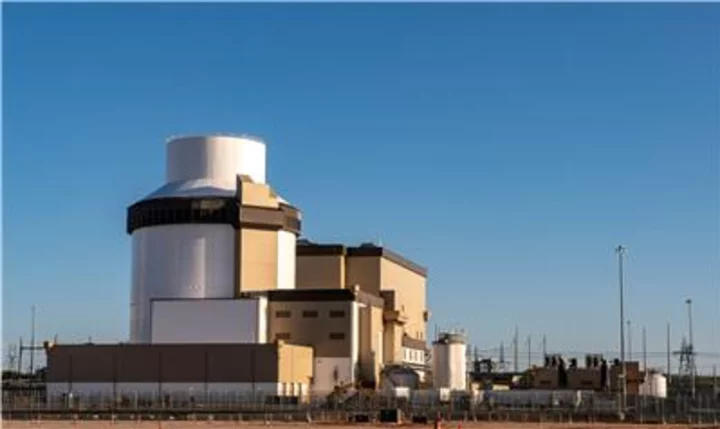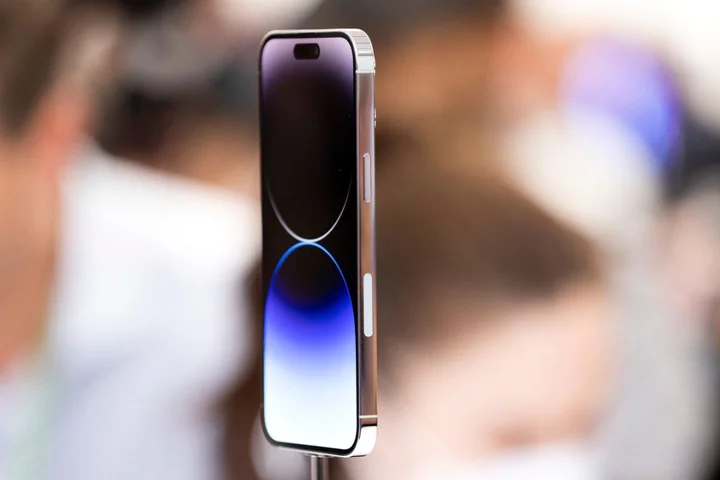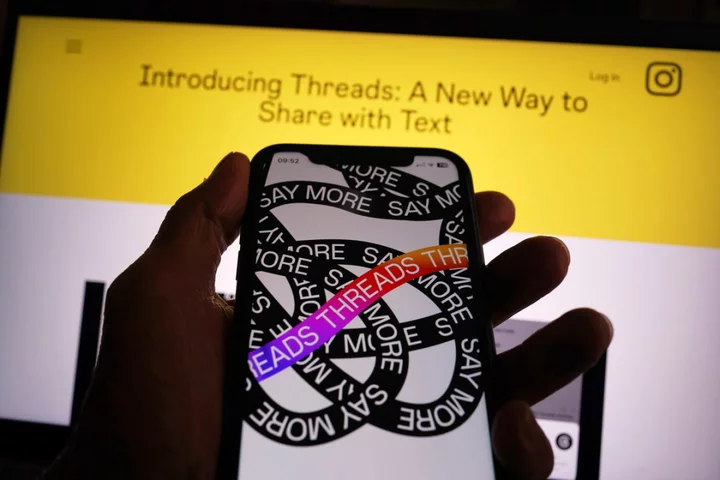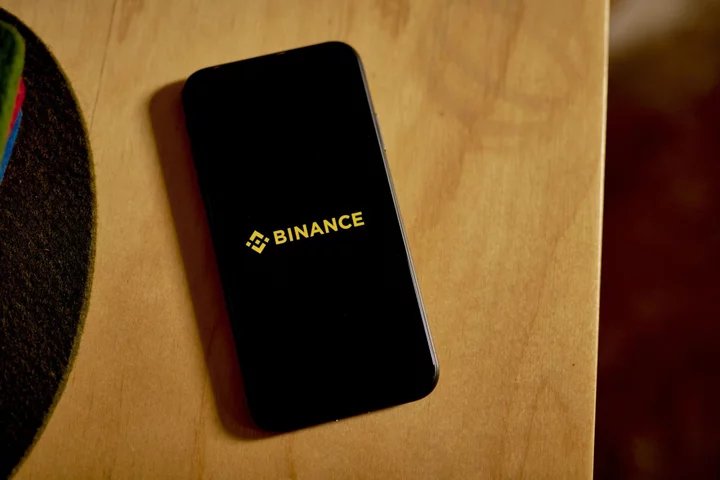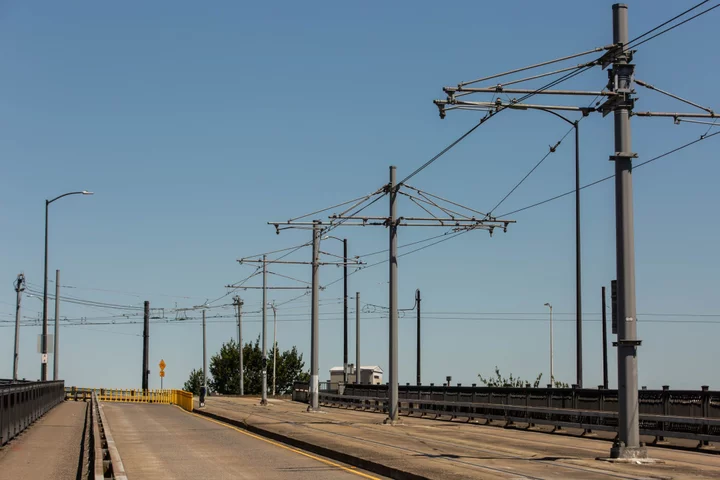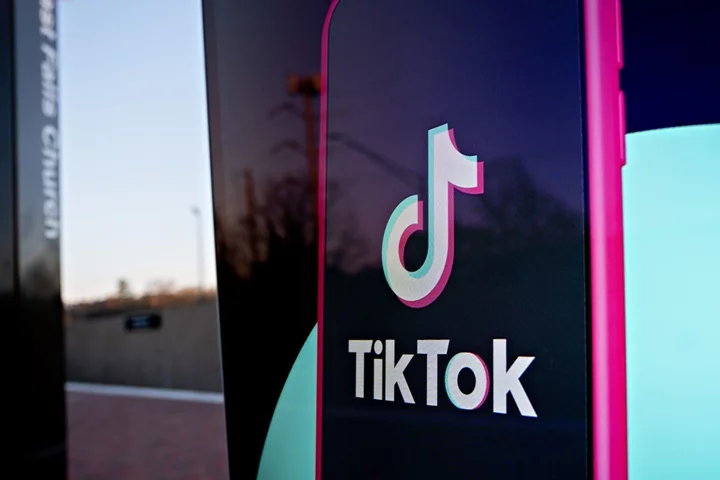Summer is nearly here, and with it arrives June—Pride Month. Although Pride can be a party, it's also a great opportunity to join the struggle for LGBTQ+ rights. Here's how to exercise your right to assemble in any protest or other gathering while limiting the information that law enforcement can extract from your smart devices.
Personal Safety
A concern at any protest is safety, not only from law enforcement surveillance but increasingly from the threats of white nationalist groups staging anti-LGBTQ+ events and counter-protests. These groups often use hate speech and intimidation as key tactics, but the implicit threat has increased with cases of physical violence, such as the killing of a protester at the Unite the Right rally in 2017.
In its guide for protecting Pride organizing, the Western States Center says that in January 2022, 110 of the 255 anti-LGBTQ+ counter protests, "are known to have included armed, unlawful paramilitary, or white nationalist actors. Though open carry [of firearms] at protests may sometimes be legal, it increases the risk of escalation and can chill free expression through intimidation."
Although disheartening, the persistence of such bigotry is a reminder why public protests for queer rights and public displays of queer joy are all the more important. So, don't shy away—instead, be prepared.
Follow updates about the event you plan to attend, so you're aware of any last-minute changes.
Educate yourself about the security policies for events. Consider attending organizing meetings for the event, if you can.
Know event policies regarding disruptions and counter-protests. Some may encourage attendees to not engage.
Know what the procedures are for emergencies and any points of contact. Some events may have specially designated security, marshals, or de-escalation teams.
Some counter-protestors use photos, video, and interview formats as well as provocations for violence. Be aware of these tactics.
If you're concerned about your safety, consider attending with a friend or small group.
It's also important to be aware of misinformation. We've already seen several times this year how deepfaked and AI-generated footage can sow confusion. Look to the organizers of events and trusted news sources for the latest information.
How Cell Phones Are Tracked
I asked Daly Barnett, a staff technologist at the Electronic Frontier Foundation, how protests today differ from those in the 20th century. "Unlike the era of peak ACT UP and Stonewall, law enforcement is now equipped with unparalleled surveillance technology," she said. "Carceral technologies like ALPRs [automated license plate readers], private sale of data broker assets, facial recognition on cameras, even collaboration with technologies like Ring camera by Amazon—all of these things are weaponized against activists." Barnett stated, saying that all this combined with large-scale "dragnet" warrants and the warrantless purchase of accurate location data, is "critically dangerous to this movement."
Mobile devices are extremely powerful, because they combine Wi-Fi, cellular, and GPS information into a single device. That also means that they can be tracked in several different ways. Stingrays and other IMSI catchers are controversial devices that have been used by local and federal law enforcement. These devices can trick your cell phone into connecting with them instead of a cell tower, and they can intercept information (such as SMS messages) without you necessarily realizing it. They can also extract identifying information from your phone and track your movements.
Even without fancy devices, though, law enforcement may be able to obtain information on your movements and activities from your wireless provider.
Intercepting individual messages from hundreds of thousands of people is doable, but it's not particularly easy and doesn't really make sense given the circumstances. Any authoritarian government monitoring a massive protest would likely be more interested in intelligence-gathering for future investigation. Law enforcement or government agencies would want to know who is at the event, who they are with, and what information can be extracted to monitor them later.
On the Wi-Fi end of things, a specially designed device can trick your phone into connecting by posing as a friendly Wi-Fi network; and your phone, trying to be helpful, may automatically connect to it. While Stingray and similar devices are tricky pieces of equipment, spoofing a Wi-Fi network is actually pretty easy. It can be as simple as renaming an access point to something common and relying on devices to automatically connect. More elaborate attacks use devices that mimic networks requested by victims' devices. In fact, I had two such devices sitting on my desk for several years (for entirely legal reasons).
Intelligence agencies might use Wi-Fi attacks like this, but given how easy the devices are to set up and how many out-of-towners will be in the area, coupled with the fact that cell service is going to be bad, gatherings and protests are great opportunities for criminals to target easy prey. No matter how tempting, do not connect to Wi-Fi at or near the event. And I highly recommend turning off your Wi-Fi radio while you're in the general vicinity.
Many smart devices track your location through multiple means. This is extremely useful for getting directions and finding things nearby, but it can also allow law enforcement to extract your movements after the fact. For example, pictures you take with a smartphone frequently include their physical locations, and Google Maps maintains startlingly complete records of your movements in its Your Timeline section.
To minimize the extent your device can be tracked, you should:
Shut off your Wi-Fi radio.
Disable location services until you absolutely need them.
Disable Bluetooth, unless you absolutely need it.
If you don't need to use your data connection, switch it off, too. Note that this may hamper your ability to use encrypted communications.
Leave your phone at home. The best way to prevent your phone being tracked is to either turn it off entirely or not bring it at all.
How the Police Can Identify You
Your physical person can also be tracked, even in a large crowd. Facial-recognition technology coupled with AI-powered detection can pick out and track individuals in groups. Airborne surveillance using anything from conventional aircraft, to small radio-controlled quadcopters, to military-style drones can monitor the movements of individuals and track them over time. The EFF maintains an excellent primer on identifying surveillance systems, which can include police bodycams, automated-license-plate-reader cameras, and more. The Atlantic reported several years ago that X-Ray vans can be used to scan individuals without their knowledge.
Social media has played a large role in organizing protests and amplifying the messages of demonstrators. But the information posted to these platforms can also be used as open-source intelligence for anyone trying to track who attends demonstrations. Sharing photos and videos from protests can amplify the message, but this information could also be used to implicate you or others. The EFF recommends taking steps to remove metadata from images, as well
Remember that even if you are comfortable being identified in images, others may not be. Consider framing photos to show as little of people's faces as possible, or blurring faces when you do share photos. And it never hurts to ask before sharing someone's face online.
If you're concerned about being identified for any reason, consider covering identifiable tattoos and wearing inconspicuous clothing. Obscuring your face can be useful as well.
How to Cop-Proof Your Phone
If you bring a phone to a protest, assume that you are going to be surveilled and act accordingly. It's also prudent to assume that you might be detained by law enforcement and that your phone could be confiscated. It might also be stolen. Either way, once it's out of your hands, your phone could be unlocked and its contents dumped for future analysis.
Most devices can be quickly unlocked with biometrics (such as facial recognition or thumbprint scanning). Biometric systems may put you at a disadvantage, though, when you're dealing with law enforcement. In its guide for protestors, the EFF wrote: "Under current U.S. law—which is still in flux—using a memorized passcode generally provides a stronger legal footing to push back against a court order of compelled device unlocking/decryption." It's better to disable biometrics and enable password or PIN logins for mobile devices before a protest.
Modern Apple and Android devices support modes that temporarily disable biometrics. But once you unlock your device, it reverts to using biometrics. But if you don't have the time to fully disable biometrics beforehand: On Android, hold the power button and select lockdown. On an iOS device, hold the power button and volume up buttons for a few seconds until you see the power off, medical ID, and Emergency SOS screen. Tap cancel, and the phone will require your passcode to unlock instead of biometric authentication.
Barnett said that law enforcement "tends to have access to greater forensic technology that can do more than any random person. Instead of trying to technologically defeat the capabilities of that forensic tech, it’s most important that people at risk are careful to review what’s on their devices, what methods of communication they’re using with others [...] and what their primary alternate contingency plans are in the case of losing access to that device."
To best secure your phone, you should:
Disable biometric login, and know how to temporarily disable biometric login quickly.
Enable disk encryption. Most Android and Apple devices will do this automatically when you enable a passcode or biometrics, but double-check.
Remove unnecessary apps and reinstall them later. Even when not in use, some apps can send and receive data. This can slow down an already spotty connection and could be used to monitor your activity.
Log out of any apps you won't need. By default, you usually need to log in to an app only once to use it. That's a problem when you're not in control of your phone.
If you back up your phone (and you should), make sure that your backups are secure with a complex, unique password and multifactor authentication. This may require making changes to your Apple or Google accounts. To help you get started, see our guides to backing up iPhones and Android devices.
Enable the remote-control features built into Android and iOS so you can remotely wipe or disable a lost or confiscated device.
Use secure messaging, and set text messages to delete automatically. (More on this below.)
How to Communicate Securely
Whether you're protesting or just chatting with your family, use encrypted communications whenever possible. These systems ensure that if your messages are intercepted, they will be unreadable except to the intended recipients.
The excellent Signal app for Android and iPhone lets you send encrypted messages to other Signal users. The app and its protocol are open-source, so it has been carefully examined for potential flaws and endorsed by many security experts. The app looks and works just like your existing messaging client, and on Android, it can actually serve as a full-on SMS client replacement. You can also use it to make encrypted VoIP and video calls. For more, check out PCMag's roundup of Signal tips.
One particularly useful feature of Signal is that your messages can be set to expire. This way, there's little trace of your previous conversations in the app. Other secure messaging apps have similar features. WhatsApp is particularly notable, as it has wider adoption than Signal but uses the same technology to secure messages. Both WhatsApp and Signal have powerful tools for group chats that also make them useful for organizing protests.
It's Surprisingly Easy to Be More Secure OnlineThe iPhone uses end-to-end encryption when sending messages between you and other iPhone users. So whenever you see the blue bubble around text, you can rest assured that if the message is intercepted, it cannot be read. But if you have iCloud backups enabled, law enforcement might be able to obtain your conversations, because Apple does not use end-to-end encryption for message backups. (WhatsApp has a similar issue on iPhones.) Enabling Apple's Advanced Data Protection option should close this loophole.
Keep in mind that iPhones don't always send encrypted messages. With bad connectivity, iPhones sometimes fail over to unsecured SMS messages; and no messages sent to non-iPhone users from iPhones are encrypted. It's also possible that screenshots of your messages could be shared with people you did not intend and for untrustworthy individuals to join large group chats. As always, consider that someone might see your messages, even when they're sent securely.
Beyond your text messages, VPNs are useful tools for securing your web traffic, especially in situations in which you're using unfamiliar Wi-Fi networks, or you believe your communications could be monitored. But given the spotty nature of cell service at large events and the spotty reliability of mobile VPNs, this may not make sense for use during an actual protest.
If you do decide to use some of these secure services, excellent! You're taking the first steps to ensure that your life is a little more controlled and safer. But be sure that before you join a protest, you've tried out the tools for a few days and understand how they work and how to use them. The only thing worse than not being safe is thinking you are when you're not.
Plan for Bad Service
Cellular networks rely on terrestrial antennas that can be overwhelmed when lots of people cram into a relatively small area. At many major events, wireless providers often bring in mobile cellular infrastructure to try and serve the throngs. I experienced this first-hand at President Obama's inauguration in 2009, where despite the additional antennas, my phone was effectively useless even hours after the event concluded and I had walked far away.
Bad cell service is frustrating, but it can become dangerous if you're lost in an unfamiliar place or the event you're attending is unexpectedly disrupted. With that in mind:
Make arrangements in advance with your friends and visitors to meet at easily found locations that require little knowledge of the area.
Make plans on where to meet before and after the event, and what to do if the event is disrupted.
Buy, print out, or draw maps of where you intend to be, since data may end up being a scarce commodity even after the protest begins to disperse. You can download maps to your phone for offline use, too.
Have prearranged signals you can use with people you trust. Sending a single emoji that means "we have to go, meet me at the place we planned" is much easier than typing all that information out.
Make plans on when and how to check in after the event, in case anyone becomes separated.
Leave Your Phone at Home (Or Get a New One)
If you have the means to do so, consider purchasing a completely different phone for the protest and leaving your personal devices at home. There are many affordable new Android phones available, and many wireless carriers can provide a prepaid service for your device. There are also low-cost plans from smaller carriers. I've purchased older Android devices on eBay (Nexus 5x for a mere $40) and had little trouble using it for basic activities.
If you opt to go this route, you should still secure it as you would your personal device. But because it's not going to be used for other activities, you can afford to be even more assiduous.
Don't install any apps that aren't absolutely essential.
Don't connect it to any of your cloud services, such as your Google account.
If you must log into an app to use it, see if you can enable a secondary PIN on the app itself. Signal offers the ability to require a PIN to unlock the app.
Store only information in your Contacts app for people who are absolutely essential. Consider not using their real names in your address book, but something else that you'll recognize easily.
Shut It Down
When I tell people that their best defense is just to switch off their phones, they always seem disappointed. But it's true. The best way to keep from being surveilled is never to be on the grid in the first place.
Unfortunately, this might not be practical advice. For one thing, mobile devices are useful for staying safe and coordinating with your friends and fellow protestors. For another, protestors amplify their message by sharing photos, videos, and live streams in the moment. While shutting your phone off will certainly make you harder to track, it could leave you without important tools to protect yourself.
How to Lock Down Your Phone for a ProtestPlan Ahead for Safety
Pride Month is an incredible opportunity to celebrate and agitate, so don't let the oppressive forces of surveillance and bigotry stop you from taking to the streets. Make a plan, stick to it, and have a safe and joyful time.


